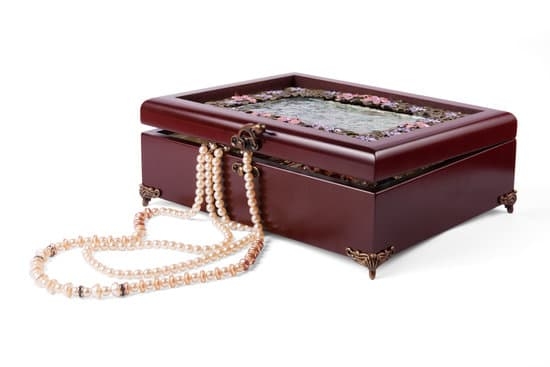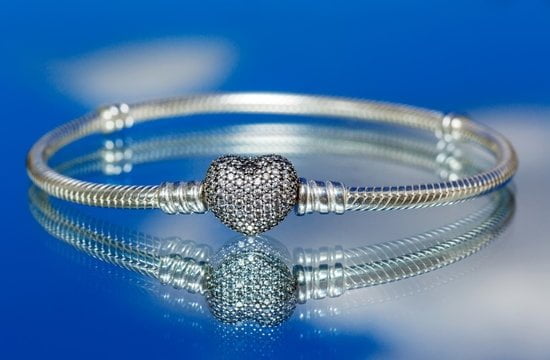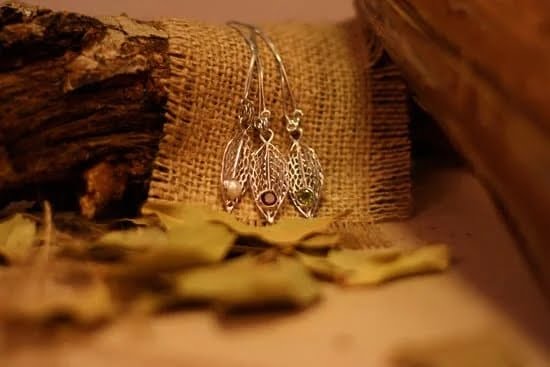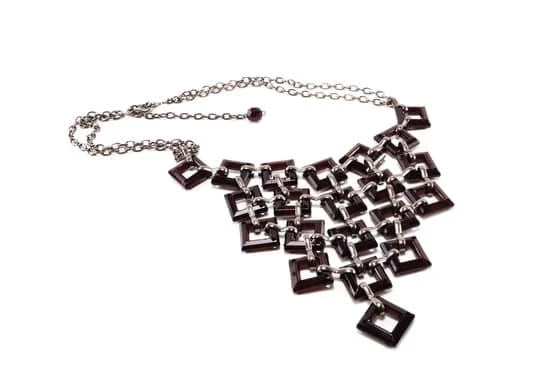Gold plated jewelry is a beautiful and affordable alternative to solid gold pieces. However, over time, the gold plating can wear off, leaving the jewelry looking dull and less attractive.
In this article, we will discuss how to replate gold plated jewelry, whether you choose to do it yourself or seek professional services. Proper care and maintenance are crucial for preserving the shine and quality of gold plated jewelry, and knowing when and how to replate it can extend its lifespan.
Gold plated jewelry consists of a thin layer of gold applied to a base metal. With regular wear, this layer can wear off, revealing the underlying metal and affecting the overall appearance of the piece.
It’s important to recognize the signs of wear on your gold plated jewelry and take proactive steps to maintain its beauty. By understanding the signs of wear and learning how to properly care for gold plated jewelry, you can ensure that your favorite pieces remain looking their best for years to come.
Preparing for replating is an essential step in achieving optimal results. Before sending your jewelry off for replating or attempting a DIY project at home, thorough cleaning and preparation are necessary.
In the following sections, we will cover everything you need to know about recognizing signs of wear on your gold plated jewelry, as well as how to properly prepare for replating. Whether you choose to entrust this task to professionals or take matters into your own hands, proper preparation is key in achieving a successful outcome.
Signs of Wear
Gold plated jewelry is a popular and affordable option for adding a touch of elegance to any outfit. However, over time, this type of jewelry can show signs of wear and tear, affecting its appearance and longevity. One common sign of wear on gold plated jewelry is tarnishing, which occurs when the thin layer of gold begins to fade or discolor. Scratches and loss of luster are also indicators that the plating is deteriorating.
These signs of wear not only impact the aesthetic appeal of the jewelry but can also lead to further degradation if left unaddressed. Tarnishing, in particular, can cause the underlying base metal to become exposed, leading to corrosion and irreversible damage. As such, it is important for individuals who own gold plated jewelry to be vigilant in recognizing these signs and take proactive measures to address them.
In order to prevent the need for frequent replating or restore deteriorated gold plated jewelry, it is crucial for individuals to understand how to identify these signs of wear early on and take appropriate action. Whether it involves seeking professional replating services or attempting DIY methods at home, being proactive in maintaining and caring for gold plated jewelry can extend its lifespan and keep it looking like new.
| Signs of Wear | Impact |
|---|---|
| Tarnishing | Can lead to base metal exposure and corrosion |
| Scratches | Deteriorate the appearance and luster of the jewelry |
| Loss of Luster | Affects the overall aesthetic appeal of the jewelry |
Preparing for Replating
For individuals who want to extend the lifespan of their gold plated jewelry, replating it is a common and effective solution. However, before sending your beloved pieces off to a professional for replating, it’s essential to properly prepare them to ensure the best possible results. The key to successful replating lies in thorough cleaning and careful preparation.
To begin the process of preparing your gold plated jewelry for replating, start by gently cleaning it with a mild soap and warm water. Use a soft-bristled brush or cloth to remove any dirt, grime, or residues that have accumulated on the surface of the jewelry. For stubborn tarnish or discoloration, consider using a specialized jewelry cleaner or polish that is safe for use on gold plated items.
Once the jewelry has been cleaned, inspect it closely for any areas where the plating may have worn through completely. These spots will need special attention during the replating process, as they may require additional layers of gold in order to fully restore the item’s appearance.
Properly preparing your gold plated jewelry for replating is crucial for achieving optimal results and ensuring that your favorite pieces look as good as new. Taking the time to clean and inspect your jewelry before sending it off for replating can make all the difference in its appearance and longevity.
| Preparing Steps | Details |
|---|---|
| Cleaning | Gently clean with mild soap and warm water |
| Inspection | Closely inspect for worn areas that may need extra attention |
Finding a Replating Service
Tips for Finding a Reputable Replating Service
When looking for a replating service for your gold plated jewelry, it’s important to find a reputable and professional provider. One of the best ways to do this is by asking for recommendations from friends or family who have had their jewelry replated. Additionally, you can search online for reviews and testimonials from previous customers to gauge the quality of work and customer satisfaction. Look for companies with a proven track record and positive feedback.
Factors to Consider
There are several factors to consider when choosing a replating service. Cost is an important consideration, as prices can vary widely depending on the type of jewelry and the extent of the replating required.
It’s also essential to inquire about the turnaround time, as some services may take longer than others. Quality of work is another crucial factor – make sure to ask about the process they use, the materials they work with, and whether they offer any guarantees on their work.
Quality of Work
It’s essential to choose a replating service that prides itself on providing high-quality work. This means using proper techniques and materials to ensure a durable and long-lasting finish.
Look for a company that specializes in jewelry replating specifically, as they will have the expertise and experience needed to handle your precious pieces with care. Don’t be afraid to ask questions about their process and request examples of their previous work to get a sense of the quality you can expect.
DIY Replating
If you’re feeling adventurous and want to try your hand at replating your gold plated jewelry at home, it’s important to proceed with caution and patience. DIY replating can be a cost-effective option for those who are willing to put in the effort and follow the necessary steps. Here’s a basic guide on how to replate gold plated jewelry yourself:
- Clean the Jewelry: Before starting the replating process, it’s crucial to thoroughly clean the jewelry to remove any dirt, oils, or residue. Use a mild soap and warm water to gently scrub the piece, and then dry it completely.
- Prepare the Surface: Once the jewelry is clean, use a fine-grit sandpaper to lightly buff the surface. This will help create a smooth and even texture for the new layer of gold plating to adhere to.
- Use a Replating Kit: Purchase a reputable gold replating kit, which typically includes solutions for cleaning, plating, and sealing. Follow the instructions provided with the kit carefully, as different products may have specific application methods.
When attempting DIY replating at home, be sure to take proper safety precautions such as wearing gloves and working in a well-ventilated area. Additionally, keep in mind that while DIY replating can be effective for minor touch-ups and small pieces of jewelry, more complex or valuable items may be best left to professional replating services.
Aftercare
Caring for Replated Gold Plated Jewelry
Once you’ve had your gold plated jewelry replated, it’s important to take proper care of it to ensure its longevity. To keep your jewelry looking its best, avoid exposing it to harsh chemicals or abrasive materials. Remove your jewelry before swimming, showering, or using beauty products such as lotions, perfumes, and hairsprays, as these can cause the plating to wear off faster.
Cleaning Replated Gold Plated Jewelry
Regular cleaning is essential for maintaining the appearance of your replated gold plated jewelry. Use a soft cloth to gently wipe away any dirt or oils after each wear. For more stubborn dirt or tarnish, create a mild solution of warm water and gentle soap and use a soft-bristled brush to clean the jewelry. Avoid using harsh chemicals or abrasive materials during the cleaning process.
Preventing Future Replating
To minimize the need for frequent replating, store your gold plated jewelry properly when not in use. Keep each piece in a separate compartment or pouch to prevent scratching and tangling. Additionally, consider getting a protective coating applied to your replated jewelry to help prolong its lifespan. This extra layer can act as a barrier against everyday wear and tear.
By following these aftercare tips, you can extend the life of your replated gold plated jewelry and keep it looking beautiful for years to come.
For more information on how to replate gold plated jewelry visit (website).
Alternatives to Replating
When it comes to rejuvenating or restoring worn gold plated jewelry, there are a few alternatives to replating that you can consider. Each alternative has its own set of pros and cons, including cost and effectiveness. Here are some options to explore:
- Gold Polishing Cloth: A gold polishing cloth is a simple and affordable option for removing tarnish and restoring shine to gold plated jewelry. These cloths are designed to safely remove surface dirt and oxidation without damaging the plating. While they may not be able to completely restore heavily worn pieces, they can help maintain the appearance of lightly tarnished jewelry.
- Dipping Solution: Some jewelry cleaning solutions offer a dipping option for gold plated items. These solutions typically contain mild chemicals that can help remove tarnish and dirt from the surface of the jewelry. However, it’s important to follow the instructions carefully and avoid prolonged soaking, as this could potentially damage the plating.
- Professional Cleaning Services: If your gold plated jewelry is in need of more intensive cleaning or restoration, you may want to consider taking it to a professional jeweler or cleaner. They have specialized equipment and expertise in handling delicate pieces, which can be especially helpful for intricate or valuable items.
It’s important to weigh the pros and cons of each alternative before making a decision on how to restore your gold plated jewelry. While these options may provide temporary fixes, replating is often the most effective way to fully restore the appearance of heavily worn pieces.
Ultimately, regular maintenance and proper care are key in prolonging the lifespan of your gold plated jewelry. By exploring these alternatives and taking proactive steps to preserve your favorite pieces, you can keep them looking like new for years to come.
Conclusion
In conclusion, the process of replating gold plated jewelry is a valuable way to restore and rejuvenate beloved pieces that have started to show signs of wear. By understanding the signs of wear, preparing for replating, and finding reputable services or attempting a DIY approach, it is possible to extend the lifespan of gold plated jewelry and keep it looking like new. Proper aftercare is also crucial in prolonging the effects of replating and preventing the need for frequent restoration.
It’s important to remember that caring for gold plated jewelry involves more than just aesthetics – it’s also about preserving sentimental value and investment. And while replating may not be the only solution for worn jewelry, exploring alternatives can help in deciding the best course of action based on individual preferences, concerns, and budget.
The key takeaway from this guide is that with proper knowledge and action, it’s possible to keep gold plated jewelry in pristine condition for years to come.
By understanding what signs to look out for, how to prepare for replating, where to find professional services or how to attempt a DIY method, as well as how to care for newly replated jewelry and explore alternative options if necessary will enable individuals to make informed decisions when it comes to maintaining their favorite pieces.
Frequently Asked Questions
Can Gold-Plated Jewelry Be Replated?
Yes, gold-plated jewelry can be replated. This process involves stripping off the existing layer of gold and applying a new layer to restore its appearance. Many jewelry repair shops offer this service for a fee.
Is There a Way to Restore Gold-Plated Jewelry?
There are several methods to restore the appearance of gold-plated jewelry. One common method is using a jewelry polishing cloth or a soft-bristled brush with warm, soapy water to gently clean the piece. Another option is using a specialized gold-plating solution to replate the jewelry at home or by taking it to a professional jeweler.
How Do You Restore Fake Gold Jewelry?
Fake gold jewelry can be restored by cleaning it with mild soap and water, followed by drying it thoroughly with a soft cloth. If the item still appears dull, there are commercial gold-cleaning solutions available that can help restore its luster. Additionally, using a polishing cloth designed for faux gold can also effectively restore its shine.

Welcome to my jewelry blog! My name is Sarah and I am the owner of this blog.
I love making jewelry and sharing my creations with others.
So whether you’re someone who loves wearing jewelry yourself or simply enjoys learning about it, be sure to check out my blog for insightful posts on everything related to this exciting topic!





